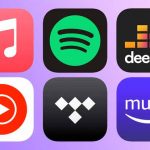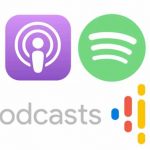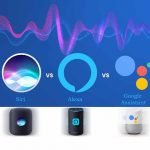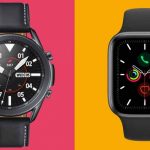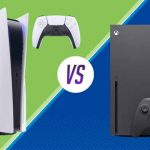Spotify is arguably the most popular streaming service globally, offering high-quality audio and an immense library containing music and a wide variety of podcasts. Though not as widely available, Tidal has a pretty good competitive edge thanks to lossless audio, podcasts, and video content.
As such, it can be understandably difficult to choose between the two seemingly similar services. So, to help you reach a more straightforward answer, we’ve analyzed the different features of each app to see which one is worth your money. Let’s get to it!
The Overview Of Tidal and Spotify
Which one is a better Music Streaming Platform?
Spotify
Swedish entrepreneurs Daniel Ek and Martin Lorentzon began developing Spotify in 2006. The app was meant to solve music piracy and provide a convenient (and legal) means to access music. In October 2008, Spotify launched in select European countries. Three years later, it hit its first million subscribers.
Today, this unassuming start-up is now the world’s biggest music streaming platform. As of June 2021, Spotify has 158 million paid subscribers and 345 million monthly active users. It’s also available in 178 countries.
You can check out this in-depth review to learn more about the ins and outs of Spotify.
Tidal
Tidal was developed by Aspiro, a Norwegian-Swedish tech company that also owns another music streaming service called WiMP. The two services were combined under the Tidal label, which eventually debuted in the UK, US, and Canada in 2014.
In January 2015, Project Panther Bidco Ltd., a company owned by rapper Jay-Z, acquired Tidal. It was then launched in several more European territories and gained its first million subscribers eight months later. This number, however, was later contested and said to be closer to 350,000.
In March 2021, Jay-Z and several of Tidal’s artist owners sold off most of their shares to Square Inc., a digital payments company. As a majority stakeholder, Square plans to “explore new artist tools, listener experiences, and access to financial systems that help artists be successful.”
As of June 2021, Tidal is available in 61 countries. There’s no official update on its subscriber count, but some estimate that Tidal has anywhere between 1-5 million subscribers.
Price and Availability
Both Spotify and Tidal offer a number of different subscription tiers – but only Spotify offers a free plan (though it is ad-supported and you can’t listen to tracks in the order you want).
The cheapest paid Spotify plan is Spotify Premium, which costs $9.99 / £9.99 / AU$11.99 per month, and gives you unlimited access to its 30 million-plus track library on your laptop, phone, and tablet. Spotify Premium also lets you download tracks to three devices at a time for offline playback.
Discounts are available for students, and you can even get Premium and access to mindfulness app Headspace under one discounted plan. Students get Headspace access as part of their Premium package.
If there are a few people in your household that want to use Spotify, you can save money by signing up to a Spotify Premium for Family account, which allows up to six people to connect to Spotify at one time (if you try to do this with a regular account, you’ll get bumped off the service as soon as another user plays a song). This tier costs $15.99 / £16.99 / AU$17.99, and requires all members to live under the same roof.
Tidal offers two subscription plans, the cheapest being Tidal Premium, which costs $9.99 / £9.99 / AU$11.99, and offers streams at a bitrate of 320kbps – the same audio quality as Spotify.
If it’s Hi-Res Audio you’re after, you’ll need to shell out for $19.99 / £19.99 / AU$23.99 per month for Tidal HiFi. So, Spotify offers cheaper subscription plans, but it doesn’t provide a higher fidelity tier for audiophiles like Tidal does.
User Interface
One of the reasons that Spotify is so popular is down to its easy-to-use interface. When you open up the app, you’ll find a number of personalized playlists – your ‘Daily Mixes’ – that have been curated by Spotify based on your listening habits, alongside your top artists, top playlists, and new releases.
That’s a thing to note about Spotify; there are a lot of playlists. That might sound daunting, but it’s a strategy that works as its algorithms ultimately tailor the app to each user.
Everything is laid out in colorful tiles that pop against Spotify’s dark background. The tile system is just small enough to make selecting new albums and playlists easy while packing in plenty into a timeline of content that’s ultimately curated to what you’ve been listening to and what you might want to jump into next.
On the desktop app and web player, there’s a sidebar on the left of the screen that lets you navigate new music releases, radio stations, as well as your library, playlists, recently played songs and more. In the mobile app these sections are a little more hidden away to save space, and it’s worth noting that the layout of the desktop and mobile platforms are a little different.
Searching is very intuitive and even if you misspell an artist’s name, Spotify will generally find what you’re looking for.
Tidal uses a similar tile-based interface on a dark background, and you’ll find curated playlists, recommended albums, and charts on your home screen. Clicking the sidebar will take you to your ‘My Music’ area, where you’ll find all your saved tracks, and browsing is generally very easy.
You can’t search by genre, unlike Spotify, which is a shame for a platform aimed at true music lovers. Search generally isn’t terribly smart – misspell an album or artist name even by one character or one piece of punctuation, and you’ll be left with zero results. A bit of optimization here wouldn’t hurt, but as long as you’re careful you won’t have any problems with it.
Saying that, Tidal does boast one cool feature that Spotify doesn’t; audio-search is essentially like having Shazam built directly into the app. Press the button and it’ll listen out for any song it can pick up in your environment, identify it, and allow you to save it to your own Tidal library.
Compatibility
You can get Spotify on Android, iOS and Windows Phone devices. If you use a laptop or desktop, Spotify also supports OS X and Windows, and there’s a flash-based web player, too.
Support for Tidal is largely the same, so you can get it on devices that run iOS 11 and higher, Android 5 and higher, macOS, and Windows. Both streaming platforms are also supported by a number of more left-field gadgets, including AV receivers, TVs, and even cars.
Music catalogue and discovery
Spotify currently boasts over 50 million songs, whereas Tidal claims to have 60 million tracks in its catalogue.
Spotify’s strong influx of tracks helped it take off in its early days, and with a reported 40,000 tracks added on average every single day – and it’s showing no signs of slowing down.
The streaming giant has a heavy focus on promoting new tracks and breakthrough artists, through curated playlists like New Music Friday acting as a launch pad for fledgling artists to break through into the big time.
Curated playlists are almost always the first thing you see when you load any version of the app, with the service seemingly designing playlists for almost every musical sub-genre. These are constantly being updated too, so your favorite ones never grate following extended use.
As we mentioned before, you’ll also find personalized playlists based on your listening habits, which is a fantastic way to discover new music, as well as revisiting some of your favorite tracks.
Spotify does have some glaring omissions in its music catalog, however, largely down to artists who don’t want to make their music available to stream anywhere or artists who have a particular dislike of Spotify’s royalty payments.
You won’t find artists like Joanna Newsom and Garth Brooks on Spotify, and until fairly recently you couldn’t even listen to The Beatles – though you’ll find their entire discography on the streaming platform these days (thank goodness).
Some of the artists who are absent from Spotify have close ties to Jay-Z and therefore favor his platform, Tidal. Beyoncé’s 2019 album Lemonade debuted on Tidal exclusively, for example.
That means Tidal’s catalogue can feel somewhat skewed towards hip-hop and rap artists, though it’s possible that this is down to the platform’s editorial curation of its tracks.
That being said, Tidal does a good job of curating music playlists based on your listening habits, and you’ll find that just a few weeks of use will give its algorithms enough information to serve you truly exciting recommendations.
Aside from these personalized recommendations, Tidal also signposts the most popular playlists and releases on its service, as well as mood-based playlists, and the Tidal Rising section, which flies the flag for new talent.
Both platforms also offer podcasts, though it seems like Spotify is taking this area a little more seriously, having spent over $200 million to acquire two podcast production companies in 2019.
https://www.youtube.com/watch?v=nRe4YDmfYuk
Audio quality
Need some great headphones to go with Spotify or Tidal? Check out TechRadar’s exhaustive guides to the best headphones, including best over-ear headphones, best on-ear headphones and the best in-ear headphones.
For some more specialist pairs, take a look at our guides to the best wireless headphones, best true wireless earbuds, best wireless earbuds, and the best noise-cancelling headphones.
Need a specific brand? We have guides to the best Sony headphones, the best Bose headphones, and the best Audio-Technica headphones.
If you subscribe to Spotify Premium, you can choose between three sound quality levels: normal, high and extreme. When using the mobile and desktop apps, Spotify uses Ogg Vorbis. This was a semi-popular format a decade ago, and Spotify continues to use it because it’s open source. Spotify doesn’t have to pay a license fee for it.
At Standard setting, music streams at 96kbps, which sounds a lot better than MP3 at 129kbps. Switch up to the high quality setting and the bitrate bumps up to 160kbps. The extreme setting uses 320kbps, which is perceptually close to lossless. Spotify doesn’t offer any lossless or Hi-Res streaming, which is one reason why audiophiles might want to consider another service.
If you’re dead-set on the best possible audio quality, then Tidal is your best bet. For that, you’ll need a Tidal HiFi subscription, which allows you to stream lossless 16-bit FLAC and ALAC audio – though there are also thousands of TIDAL Masters files that stream at 24-bit.
Even if you opt for Tidal Premium, its catalogue is still available to stream in 320kbps, the same quality as Spotify’s highest setting – and you may even find that Tidal’s tracks sound a little richer at this setting.
So, why bother with lossless streaming? Well, Hi-Res Audio codecs are capable of reproducing the full range of sound from recordings that have been mastered from better-than-CD quality music sources, a sound that closely replicates the quality that the musicians and engineers were working with in the studio at the time of recording.
The increased bit depth of HRA improves the dynamic range, basically giving you a greater breadth of things to actually hear from the recording, making tracks sound more detailed and clear.
Which Should You Go For?
So far, out of all the other comparison reviews we’ve done for streaming platforms, Tidal and Spotify are the most evenly matched. Both have claimed at least two points of comparison each in this article and tied in the rest. That said, what will conclusively decide which app is best for you are your priorities as a music listener.
If you aren’t too picky with music quality and are on a budget, Spotify is the practical way to go. The free plan is a big plus for casual listeners who want an easily accessible music platform. It’s also a good option for those who wish to integrate their personal music files into a music streaming app. And those who live for podcasts will also get more satisfaction from Spotify’s massive collection.
This doesn’t mean that Tidal is an impractical choice. However, I think it appeals more to a specific type of music fan who loves consuming everything about music. Essentially, Tidal is not just for those who prefer impeccable audio quality. It’s also for music fans who want to fully engage with the artists they love, the music, the stories, and the creative process.
At the end of the day, you’re likely not going to go terribly wrong with one or the other.
Conclusion
In sum, both apps have great things to offer in their own way. Spotify caters more to the individual and what they want to hear and share. Looking at features like Wrapped and Only You, you’ll notice it highlights music in relation to the person behind the account. And that’s perfectly fine if that’s the music app experience you enjoy.
Tidal, however, fosters connections between artists and fans. And they do this by highlighting their stories and body of work, among many other things.
Originally Answered: Can you hear a difference in quality between Spotify’s 320 Kbps stream and Tidal’s lossless audio stream? Short answer, yes. You don’t need Tidal to do the comparison either. I’ve compared CDs I own to Spotify and the difference is there, provided you’ve got a decent set of speakers or headphones.
If you’re currently in the market for a more ethical, uniquely personalized listening experience, TIDAL is worth it. TIDAL offers superb audio quality, a personalized mixed media approach to music streaming, and seamless integration of music videos for just $9.99/month.
For streaming music through Spotify, a standalone DAC will make little difference in the sound quality. Most devices already have an effective internal DAC. If the internal DAC is picking up unwanted noise, an upgrade could be worth it.
Meanwhile, Spotify’s competitors didn’t wait around. Apple Music rolled out lossless and hi-res playback in June, offering the improved audio quality at no extra charge. … Barring a last-minute holiday surprise, it seems we’ll be waiting until sometime in 2022 for Spotify HiFi.
Also read:
